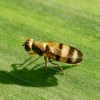 ‘Cornsilk flies’ are attractive, medium to dark metallic green to black colored flies with distinctive wing patterns and wing flapping behavior. They are commonly found throughout Florida’s agricultural communities. Their normally saprophytic life style belies their destructive nature when it comes to their preference for sweet corn ears. Four species of ‘cornsilk flies’ are known to attack corn in Florida: Chaetopsis massyla (Walker), Euxesta annonae (Fabricius), Euxesta eluta Loew, and Euxesta stigmatias Loew. This 8-page fact sheet was written by Gregg S. Nuessly and John L. Capinera, and published by the UF Department of Entomology and Nematology, April 2013. #UFBugs
‘Cornsilk flies’ are attractive, medium to dark metallic green to black colored flies with distinctive wing patterns and wing flapping behavior. They are commonly found throughout Florida’s agricultural communities. Their normally saprophytic life style belies their destructive nature when it comes to their preference for sweet corn ears. Four species of ‘cornsilk flies’ are known to attack corn in Florida: Chaetopsis massyla (Walker), Euxesta annonae (Fabricius), Euxesta eluta Loew, and Euxesta stigmatias Loew. This 8-page fact sheet was written by Gregg S. Nuessly and John L. Capinera, and published by the UF Department of Entomology and Nematology, April 2013. #UFBugs
http://edis.ifas.ufl.edu/in381
Author: dihagan
Reusable Learning Objects: Tools for Teaching in Nonformal Education (WC140)
 Reusable learning objects are short, self-contained, digital learning activities that can be valuable tools for sharing information. This 4-page fact sheet provides a brief synopsis of what reusable learning objects are and how to create an them for use in an educational setting. Written by Jessica L. Gouldthorpe, Amy Harder, T. Grady Roberts, and Nicole Stedman, and published by the UF Department of Agricultural Education and Communication, April 2013.
Reusable learning objects are short, self-contained, digital learning activities that can be valuable tools for sharing information. This 4-page fact sheet provides a brief synopsis of what reusable learning objects are and how to create an them for use in an educational setting. Written by Jessica L. Gouldthorpe, Amy Harder, T. Grady Roberts, and Nicole Stedman, and published by the UF Department of Agricultural Education and Communication, April 2013.
http://edis.ifas.ufl.edu/wc140
Pest Management Perceptions and Practices for Equine Farms in North and Central Florida (ENY2028/IN983)
 Equine facilities have unique pest management problems due to facility structure and horse husbandry practices. In Florida, homes on small equine farms are generally located in close proximity to pastures, stalls or run-in sheds, manure piles, and other fly breeding habitats. So homeowners have a high risk of exposure to pathogens that can be transmitted by filth flies to humans. Integrated pest management for equine farms requires accurate diagnosis of pest problems and the coordinated use of science-based management practices, but a recent survey shows that many equine property owners don’t know enough about the identification, biology, and presence of filth fly pests on their properties to develop successful IPM programs. This 7-page fact sheet was written by Erika T. Machtinger, Norman C. Leppla, and Cindy Saunders, and published by the UF Department of Entomology and Nematology, March 2013.
Equine facilities have unique pest management problems due to facility structure and horse husbandry practices. In Florida, homes on small equine farms are generally located in close proximity to pastures, stalls or run-in sheds, manure piles, and other fly breeding habitats. So homeowners have a high risk of exposure to pathogens that can be transmitted by filth flies to humans. Integrated pest management for equine farms requires accurate diagnosis of pest problems and the coordinated use of science-based management practices, but a recent survey shows that many equine property owners don’t know enough about the identification, biology, and presence of filth fly pests on their properties to develop successful IPM programs. This 7-page fact sheet was written by Erika T. Machtinger, Norman C. Leppla, and Cindy Saunders, and published by the UF Department of Entomology and Nematology, March 2013.
http://edis.ifas.ufl.edu/in983
The mexican lac scale Tachardiella mexicana (Comstock) (Hemiptera: Kerriidae) (EENY552/IN990)
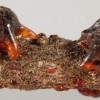 The Mexican lac scale is native to Mexico and Texas, but populations have been established in Florida. Adult female scales produce a high-domed ‘test’ or shell with four to six lobe-like projections that anchor the test to the plant surface. The test is hard and glossy with a reddish-orange tint around the edges, and darker toward the center. In some specimens, white string-like wax fiber extrusions project from the dorsum of the test, but these may break off. This 3-page fact sheet was written by Ian Stocks, and published by the UF Department of Entomology and Nematology, April 2013.
The Mexican lac scale is native to Mexico and Texas, but populations have been established in Florida. Adult female scales produce a high-domed ‘test’ or shell with four to six lobe-like projections that anchor the test to the plant surface. The test is hard and glossy with a reddish-orange tint around the edges, and darker toward the center. In some specimens, white string-like wax fiber extrusions project from the dorsum of the test, but these may break off. This 3-page fact sheet was written by Ian Stocks, and published by the UF Department of Entomology and Nematology, April 2013.
http://edis.ifas.ufl.edu/in990
El sobrepeso y el mantenimiento de la perdida de peso (FSHN1304S/FS228)
 Para muchas personas, la pérdida de peso es una batalla crónica. Las dietas populares a menudo son poco exitosas porque no se pueden seguir de forma permanente. No hay una dieta mágica que le pueda hacer bajar de peso inmediatamente, pero a continuación se enumeran algunos buenos consejos para la pérdida de peso de una manera estable y de largo plazo. This 3-page fact sheet was written by Anne Mathews, Lauren Foster, and Wendy Dahl, and published by the UF Department of Food Science and Human Nutrition, April 2013.
Para muchas personas, la pérdida de peso es una batalla crónica. Las dietas populares a menudo son poco exitosas porque no se pueden seguir de forma permanente. No hay una dieta mágica que le pueda hacer bajar de peso inmediatamente, pero a continuación se enumeran algunos buenos consejos para la pérdida de peso de una manera estable y de largo plazo. This 3-page fact sheet was written by Anne Mathews, Lauren Foster, and Wendy Dahl, and published by the UF Department of Food Science and Human Nutrition, April 2013.
http://edis.ifas.ufl.edu/fs228
Nursery Irrigation System Checklist (ENH1208/EP469)
 Irrigation must be intensively managed to achieve optimal production times for plants of superior quality. There must be a balance between excessive and inadequate irrigation. Producers use irrigation control devices and past experience to achieve the balance. A few simple checks before and during irrigation can make a big difference in efficient and uniform delivery of the appropriate amount of water. This 4-page fact sheet was written by Tom Yeager, and published by the UF Department of Environmental Horticulture, April 2013.
Irrigation must be intensively managed to achieve optimal production times for plants of superior quality. There must be a balance between excessive and inadequate irrigation. Producers use irrigation control devices and past experience to achieve the balance. A few simple checks before and during irrigation can make a big difference in efficient and uniform delivery of the appropriate amount of water. This 4-page fact sheet was written by Tom Yeager, and published by the UF Department of Environmental Horticulture, April 2013.
http://edis.ifas.ufl.edu/ep469
Developmental Coordination Disorder (FAR1816/FM1076)
 In any classroom, you’ll find a wide range of physical skills. Some children are amazing artists but just average at kickball. Others excel at sports but struggle with handwriting. But a few children seem to have a hard time with most physical tasks. They may be affected by developmental coordination disorder, or DCD, a neurodevelopmental condition that causes difficulties with physical coordination. This 2-page Family Album Radio transcript was written by Carol Church, and published by the UF Department of Family Youth and Community Sciences, April 2013.
In any classroom, you’ll find a wide range of physical skills. Some children are amazing artists but just average at kickball. Others excel at sports but struggle with handwriting. But a few children seem to have a hard time with most physical tasks. They may be affected by developmental coordination disorder, or DCD, a neurodevelopmental condition that causes difficulties with physical coordination. This 2-page Family Album Radio transcript was written by Carol Church, and published by the UF Department of Family Youth and Community Sciences, April 2013.
http://edis.ifas.ufl.edu/fm1076
Nematode Management in Residential Lawns (ENY006/NG039)
 Plant-parasitic nematodes are among the least understood and most difficult pests to manage on turfgrass in Florida. They are very small, and most can only be seen with the aid of a microscope. They use a stylet to puncture plant cells, to inject digestive juices into them, and to ingest plant fluids. The most reliable way to determine whether plant-parasitic nematodes are involved in a turf problem is to have a nematode assay conducted by a professional nematode diagnostic lab. This 6-page fact sheet was written by William T. Crow, and published by the UF Department of Entomology and Nematology, April 2013.
Plant-parasitic nematodes are among the least understood and most difficult pests to manage on turfgrass in Florida. They are very small, and most can only be seen with the aid of a microscope. They use a stylet to puncture plant cells, to inject digestive juices into them, and to ingest plant fluids. The most reliable way to determine whether plant-parasitic nematodes are involved in a turf problem is to have a nematode assay conducted by a professional nematode diagnostic lab. This 6-page fact sheet was written by William T. Crow, and published by the UF Department of Entomology and Nematology, April 2013.
http://edis.ifas.ufl.edu/ng039
Mealybug Vryburgia trionymoides (DeLotto) (Pseudococcidae) (EENY553/IN991)
 On several occasions in 2011, succulents for sale at retail stores in Florida were found with infestations of the mealybug Vryburgia trionymoides DeLotto. A traceback revealed that the succulents originated in California, where this mealybug is known as an occasional greenhouse pest. Specimens intercepted or found in retail stores often were well-hidden in the axillary region near the stem, making detection more challenging. An untreated infestation can kill a plant, there are no published reports of economic losses caused by this species. This 2-page fact sheet was written by Ian Stocks, and published by the UF Department of Entomology and Nematology, April 2013.
On several occasions in 2011, succulents for sale at retail stores in Florida were found with infestations of the mealybug Vryburgia trionymoides DeLotto. A traceback revealed that the succulents originated in California, where this mealybug is known as an occasional greenhouse pest. Specimens intercepted or found in retail stores often were well-hidden in the axillary region near the stem, making detection more challenging. An untreated infestation can kill a plant, there are no published reports of economic losses caused by this species. This 2-page fact sheet was written by Ian Stocks, and published by the UF Department of Entomology and Nematology, April 2013.
http://edis.ifas.ufl.edu/in991
Tuttle mealybug Brevennia rehi (Pseudococcidae) (EENY551/IN989)
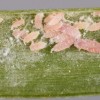 The Tuttle mealybug, Brevennia rehi (Lindinger), is a pest of many grass species and occurs nearly worldwide, especially where rice and sugarcane are grown. Because Bermuda and zoysia are important lawn grasses, especially in the southern United States, infestation by Tuttle mealybug should be considered whenever dieback is noticed, especially if the grass blades show white wax or are sticky from honeydew secretion. Both Bermuda and zoysia lawns are commonly installed as sod or plugs, which provide a ready route for the spread of infestations should the pest control practices of the grower fail to maintain a pest-free production environment. This 3-page fact sheet was written by Ian Stocks, and published by the UF Department of Entomology and Nematology, April 2013.
The Tuttle mealybug, Brevennia rehi (Lindinger), is a pest of many grass species and occurs nearly worldwide, especially where rice and sugarcane are grown. Because Bermuda and zoysia are important lawn grasses, especially in the southern United States, infestation by Tuttle mealybug should be considered whenever dieback is noticed, especially if the grass blades show white wax or are sticky from honeydew secretion. Both Bermuda and zoysia lawns are commonly installed as sod or plugs, which provide a ready route for the spread of infestations should the pest control practices of the grower fail to maintain a pest-free production environment. This 3-page fact sheet was written by Ian Stocks, and published by the UF Department of Entomology and Nematology, April 2013.
http://edis.ifas.ufl.edu/in989
Valuing the Ecosystem Services of Florida‹s Forest Conservation Programs: The Economic Benefits of Protecting Water Quality (FOR309/FR377)
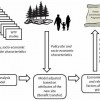 How much are Floridians willing to pay for water quality protection programs that include forest conservation? This 9-page fact sheet reports the results of a study to answer this question, using a benefit transfer approach. Written by Melissa M. Kreye, Francisco J. Escobedo, Damian C. Adams, Taylor Stein, and Tatiana Borisova, and published by the UF Department of School of Forest Resources and Conservation, April 2013.
How much are Floridians willing to pay for water quality protection programs that include forest conservation? This 9-page fact sheet reports the results of a study to answer this question, using a benefit transfer approach. Written by Melissa M. Kreye, Francisco J. Escobedo, Damian C. Adams, Taylor Stein, and Tatiana Borisova, and published by the UF Department of School of Forest Resources and Conservation, April 2013.
http://edis.ifas.ufl.edu/fr377
Common Woody Plants of Florida Scrub Ecosystems (FOR305/FR373)
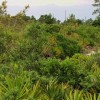 The purpose of this fact sheet is to help identify a few of the more common woody plant species found in Florida’s scrub ecosystems. In the individual plant descriptions, words that appear in bold font are considered to be key field characteristics that will aid in identification of the species. This 14-page fact sheet was written by Lynn Proenza and Michael Andreu, and published by the UF Department of School of Forest Resources and Conservation, October 2012.
The purpose of this fact sheet is to help identify a few of the more common woody plant species found in Florida’s scrub ecosystems. In the individual plant descriptions, words that appear in bold font are considered to be key field characteristics that will aid in identification of the species. This 14-page fact sheet was written by Lynn Proenza and Michael Andreu, and published by the UF Department of School of Forest Resources and Conservation, October 2012.
http://edis.ifas.ufl.edu/fr373
De compras para la salud: Vegetales (FSHN1305/FS227)
 Escoger los vegetales correctos le ayudará a obtener los nutrientes que su cuerpo necesita cada día. Con tantas opciones, ir a comprar vegetales puede parecer una tarea difícil, pero no lo tiene que ser. Este artículo le ayudará a volverse un comprador inteligente de vegetales. This 3-page fact sheet was written by Ashley R. Kendall y Wendy Dahl, and published by the UF Department of Food Science and Human Nutrition, April 2013.
Escoger los vegetales correctos le ayudará a obtener los nutrientes que su cuerpo necesita cada día. Con tantas opciones, ir a comprar vegetales puede parecer una tarea difícil, pero no lo tiene que ser. Este artículo le ayudará a volverse un comprador inteligente de vegetales. This 3-page fact sheet was written by Ashley R. Kendall y Wendy Dahl, and published by the UF Department of Food Science and Human Nutrition, April 2013.
http://edis.ifas.ufl.edu/fs227
MiPlato para los problemas de deglucion: Disfagia (FSHN1214S/FS223)
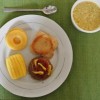 MiPlato es el ícono de los lineamientos alimentarios del Departamento de Agricultura de los Estados Unidos basado en las Guías Alimentarias del 2010 para los Estadounidenses. Es una imagen fácil de entender que se enfoca en la creación de un plato con alimentos saludables. Los recursos y herramientas en ChooseMyPlate.gov ofrece información clara y factible acerca de cómo escoger mejor alimentos que se pueden adaptar a personas con dificultades de deglución (disfagia) que requieren de alimentos con textura modificada. Aunque los alimentos magros y los alimentos bajos en grasa son recomendados, aquellos con dificultades de deglución pueden necesitar añadir la grasa a algunos alimentos para mejorar la aceptabilidad, la facilidad de deglución y también para ayudarlos a satisfacer sus necesidades de energía. This 3-page fact sheet was written by Jamila R. Lepore, Nancy J. Gal, and Wendy Dahl, and published by the UF Department of Food Science and Human Nutrition, April 2013.
MiPlato es el ícono de los lineamientos alimentarios del Departamento de Agricultura de los Estados Unidos basado en las Guías Alimentarias del 2010 para los Estadounidenses. Es una imagen fácil de entender que se enfoca en la creación de un plato con alimentos saludables. Los recursos y herramientas en ChooseMyPlate.gov ofrece información clara y factible acerca de cómo escoger mejor alimentos que se pueden adaptar a personas con dificultades de deglución (disfagia) que requieren de alimentos con textura modificada. Aunque los alimentos magros y los alimentos bajos en grasa son recomendados, aquellos con dificultades de deglución pueden necesitar añadir la grasa a algunos alimentos para mejorar la aceptabilidad, la facilidad de deglución y también para ayudarlos a satisfacer sus necesidades de energía. This 3-page fact sheet was written by Jamila R. Lepore, Nancy J. Gal, and Wendy Dahl, and published by the UF Department of Food Science and Human Nutrition, April 2013.
http://edis.ifas.ufl.edu/fs223
Overweight and Weight Loss Maintenance (FSHN1304/FS226)
 For many people, weight loss is a chronic battle. Popular diets are often unsuccessful because they cannot be followed permanently. There is no magic diet to make you instantly shed pounds, but some good tips for steady, long-term weight loss are listed in this 2-page fact sheet written by Anne Mathews, Lauren Foster, and Wendy Dahl, and published by the UF Department of Food Science and Human Nutrition, February 2013.
For many people, weight loss is a chronic battle. Popular diets are often unsuccessful because they cannot be followed permanently. There is no magic diet to make you instantly shed pounds, but some good tips for steady, long-term weight loss are listed in this 2-page fact sheet written by Anne Mathews, Lauren Foster, and Wendy Dahl, and published by the UF Department of Food Science and Human Nutrition, February 2013.
http://edis.ifas.ufl.edu/fs226
Shopping for Health: Herbs and Spices (FSHN1303/FS225)
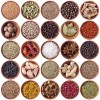 Herbs and spices have been used for hundreds of years in cooking and medicine. They add a wide range of flavors to food and may also provide health benefits. For some people, using herbs and spices in cooking may be a challenge, but it doesn’t have to be that way! The information below will get you on track to enjoying zesty, flavorful, healthy cooking.This 4-page fact sheet was written by Jenna A. Norris and Wendy Dahl, and published by the UF Department of Food Science and Human Nutrition, April 2013.
Herbs and spices have been used for hundreds of years in cooking and medicine. They add a wide range of flavors to food and may also provide health benefits. For some people, using herbs and spices in cooking may be a challenge, but it doesn’t have to be that way! The information below will get you on track to enjoying zesty, flavorful, healthy cooking.This 4-page fact sheet was written by Jenna A. Norris and Wendy Dahl, and published by the UF Department of Food Science and Human Nutrition, April 2013.
http://edis.ifas.ufl.edu/fs225
Shopping for Health: A Menu for One (FSHN1302/FS224)
 In today’s busy world, many Americans find themselves cooking meals for one. Older adults and college students alike face the challenge of making meal preparation a priority when no one else is depending on them to create a balanced meal. Whether you pop a dish into the microwave after a busy day or spend time cooking a special meal for yourself, shopping for and preparing healthy, low-cost meals for one can be easy and enjoyable with just a little bit of planning. This 4-page fact sheet was written by Morgan Denhard and Wendy Dahl, and published by the UF Department of Food Science and Human Nutrition, February 2013.
In today’s busy world, many Americans find themselves cooking meals for one. Older adults and college students alike face the challenge of making meal preparation a priority when no one else is depending on them to create a balanced meal. Whether you pop a dish into the microwave after a busy day or spend time cooking a special meal for yourself, shopping for and preparing healthy, low-cost meals for one can be easy and enjoyable with just a little bit of planning. This 4-page fact sheet was written by Morgan Denhard and Wendy Dahl, and published by the UF Department of Food Science and Human Nutrition, February 2013.
http://edis.ifas.ufl.edu/fs224
Family Records (FCS7103/HE988)
 This publication should be kept in a safe place known to adult members of your family and/or trusted friend(s). An additional copy should be kept in a safe deposit box. Revise it annually or after any life-changing circumstance to keep vital information current. This can make looking for vital records much faster and easier. It can also be used as a starting place for estate planning. These checklists provide suggestions on where to keep your important papers and what information to keep. This 14-page fact sheet was written by Brenda C. Williams, Brittany Seamon, and Martie Gillen, and published by the UF Department of Family Youth and Community Sciences, April 2013.
This publication should be kept in a safe place known to adult members of your family and/or trusted friend(s). An additional copy should be kept in a safe deposit box. Revise it annually or after any life-changing circumstance to keep vital information current. This can make looking for vital records much faster and easier. It can also be used as a starting place for estate planning. These checklists provide suggestions on where to keep your important papers and what information to keep. This 14-page fact sheet was written by Brenda C. Williams, Brittany Seamon, and Martie Gillen, and published by the UF Department of Family Youth and Community Sciences, April 2013.
http://edis.ifas.ufl.edu/he988
Citrus peelminer Marmara gulosa Guillèn and Davis (Insecta: Lepidoptera: Gracillariidae) (EENY415/IN985)
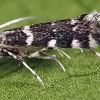 The citrus peelminer is a dark-gray moth with mottled white and brown markings and about 4 mm in length. This moth is considered native in the United States, attacking willow. It is believed that a host-shift occurred to multiple non-native plants including all varieties of citrus and cerain ornamentals, such as oleander. Citrus peelminer has been reported to occur in low numbers in Florida and at least three Marmara species have been identified in the state. Recent evaluations of an experimental pheromone lure that is still under development by researchers at the University of California, Riverside have confirmed captures of citrus peelminer (Marmara sp.) in Polk County, Florida. This 3-page fact sheet was written by Lukasz L. Stelinski, and published by the UF Department of Entomology and Nematology, April 2013.
The citrus peelminer is a dark-gray moth with mottled white and brown markings and about 4 mm in length. This moth is considered native in the United States, attacking willow. It is believed that a host-shift occurred to multiple non-native plants including all varieties of citrus and cerain ornamentals, such as oleander. Citrus peelminer has been reported to occur in low numbers in Florida and at least three Marmara species have been identified in the state. Recent evaluations of an experimental pheromone lure that is still under development by researchers at the University of California, Riverside have confirmed captures of citrus peelminer (Marmara sp.) in Polk County, Florida. This 3-page fact sheet was written by Lukasz L. Stelinski, and published by the UF Department of Entomology and Nematology, April 2013.
http://edis.ifas.ufl.edu/in985
Understanding Gluten Sensitivity and Celiac Disease (FCS8028/FY1369)
 Several years ago, most people probably had never heard of gluten, but by 2011, gluten-free diets became more popular than low carbohydrate diets. One reason for this is the increased awareness and diagnosis of conditions in which gluten triggers an abnormal response in the body, such as gluten sensitivity and celiac disease. This 4-page fact sheet will help you learn about gluten sensitivity and celiac disease, as well as understand what they have in common and what is different about them. Written by Stephanie Meyer, Karla P. Shelnutt, and Gail P. A. Kauwell, and published by the UF Department of Family Youth and Community Sciences, April 2013.
Several years ago, most people probably had never heard of gluten, but by 2011, gluten-free diets became more popular than low carbohydrate diets. One reason for this is the increased awareness and diagnosis of conditions in which gluten triggers an abnormal response in the body, such as gluten sensitivity and celiac disease. This 4-page fact sheet will help you learn about gluten sensitivity and celiac disease, as well as understand what they have in common and what is different about them. Written by Stephanie Meyer, Karla P. Shelnutt, and Gail P. A. Kauwell, and published by the UF Department of Family Youth and Community Sciences, April 2013.
http://edis.ifas.ufl.edu/fy1369